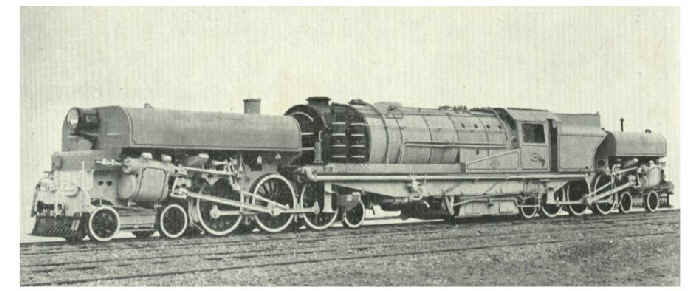Introduced: 1929
Number in Class: 3

Locomotive Specifications
|
|
| Engine Weight: 145.8 tons |
Tender Weight: | Total Weight: 145.8 tons | Adhesive Weight: 87.7 tons |
| Length over Buffers: 84' 3 3/4" |
Total Wheelbase: 76' 7½" |
Engine Wheelbase: 25' 5" | Coupled Wheelbase: 10' 9" |
| Tender Wheelbase: | Driver Wheel Dia.: 57" | Cylinders HP: Six - 16½" x 24" |
Cylinders LP: |
| Grate Area: 58.2 sq ft | Evaporative Area: 2223 sq ft |
Superheated Area: 542 sq ft |
Working Pressure: 200 psig |
| Tractive Effort: 51580 lbs f |
Coal Capacity: 6.0 tons | Oil Capacity: | Water Capacity: 4000 gals |
|
Remarks:
The Garratts were ordered to deal with the volume and tonnage of the traffic over the heavy gradients of the North Island
and to do away with the excessive use of banking engines. These engines were noteworthy in that the coal bunker was mounted on the boiler cradle
behind the cab, instead of in the customary position on the rear engine unit. In addition they were one of the few Garratt designs to employ six cylinders.
A mechanical stoker was used, but foreign objects jammed the feed screw and caused many problems.
Numerous design faults occurred and the locomotive's fate was sealed when the 'K' class was introduced in 1932.
The locomotives were much too powerful for the drawgear then in general use on ordinary rolling stock and relatively short crossing sidings
made it impractical to haul loads commensurate with the power of the locomotive.. The three Garratts saw little service and were converted into six Pacific type locomotives. (Refer to Class 'G' 4-6-2) |